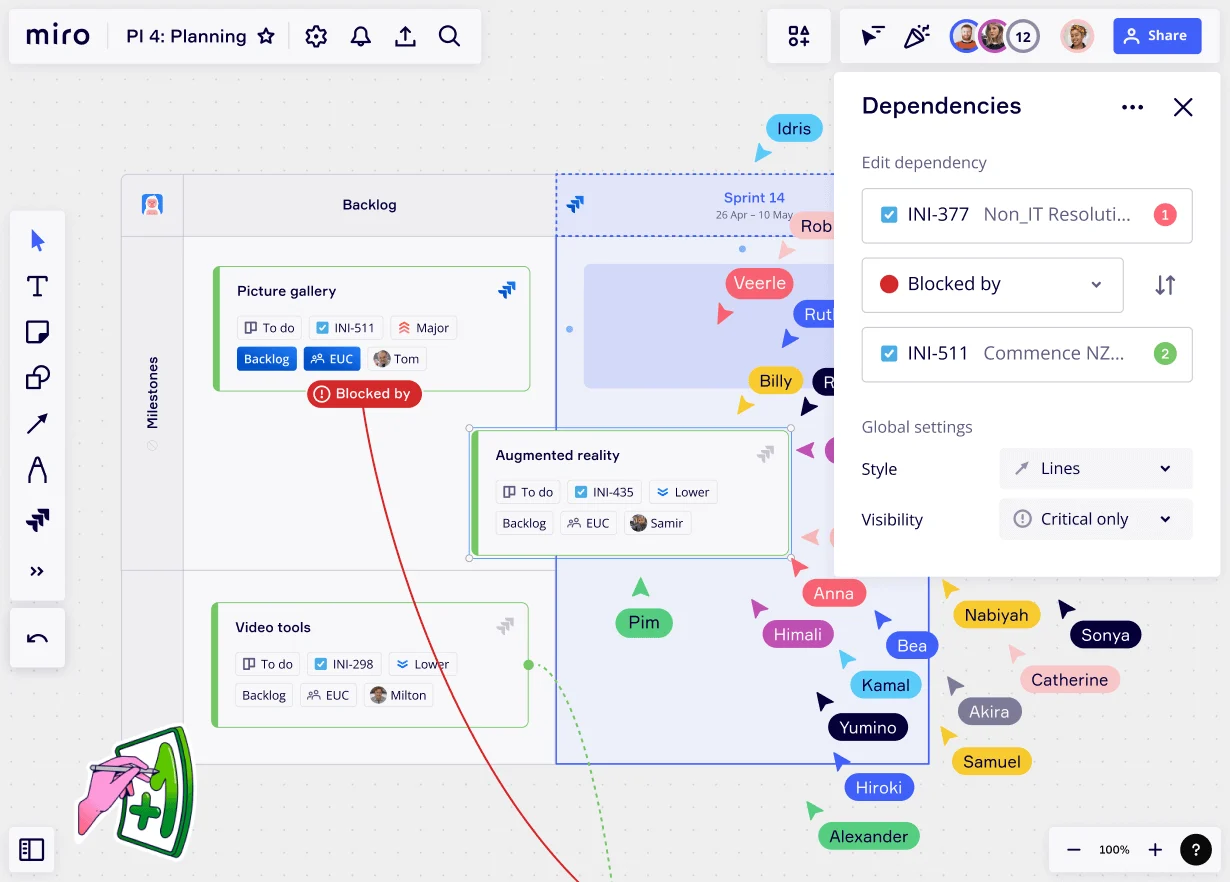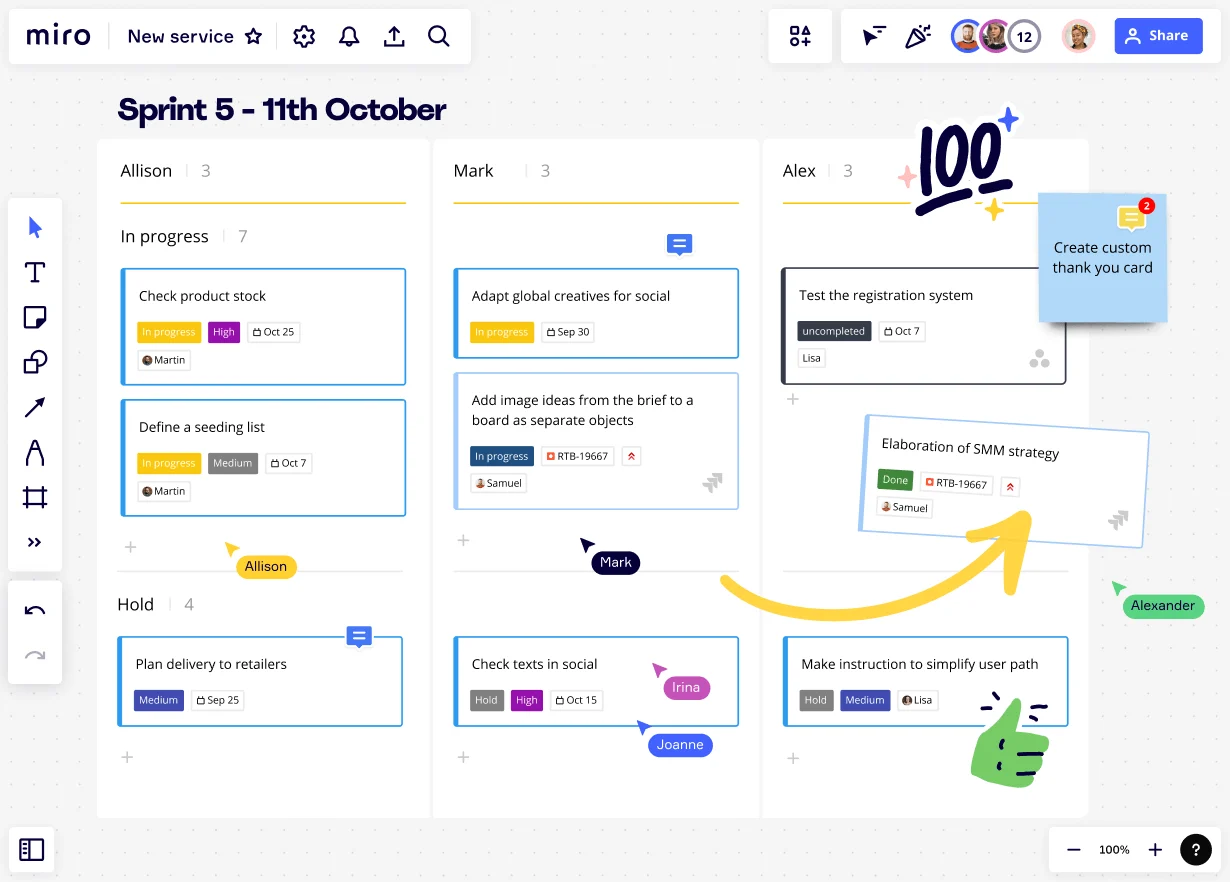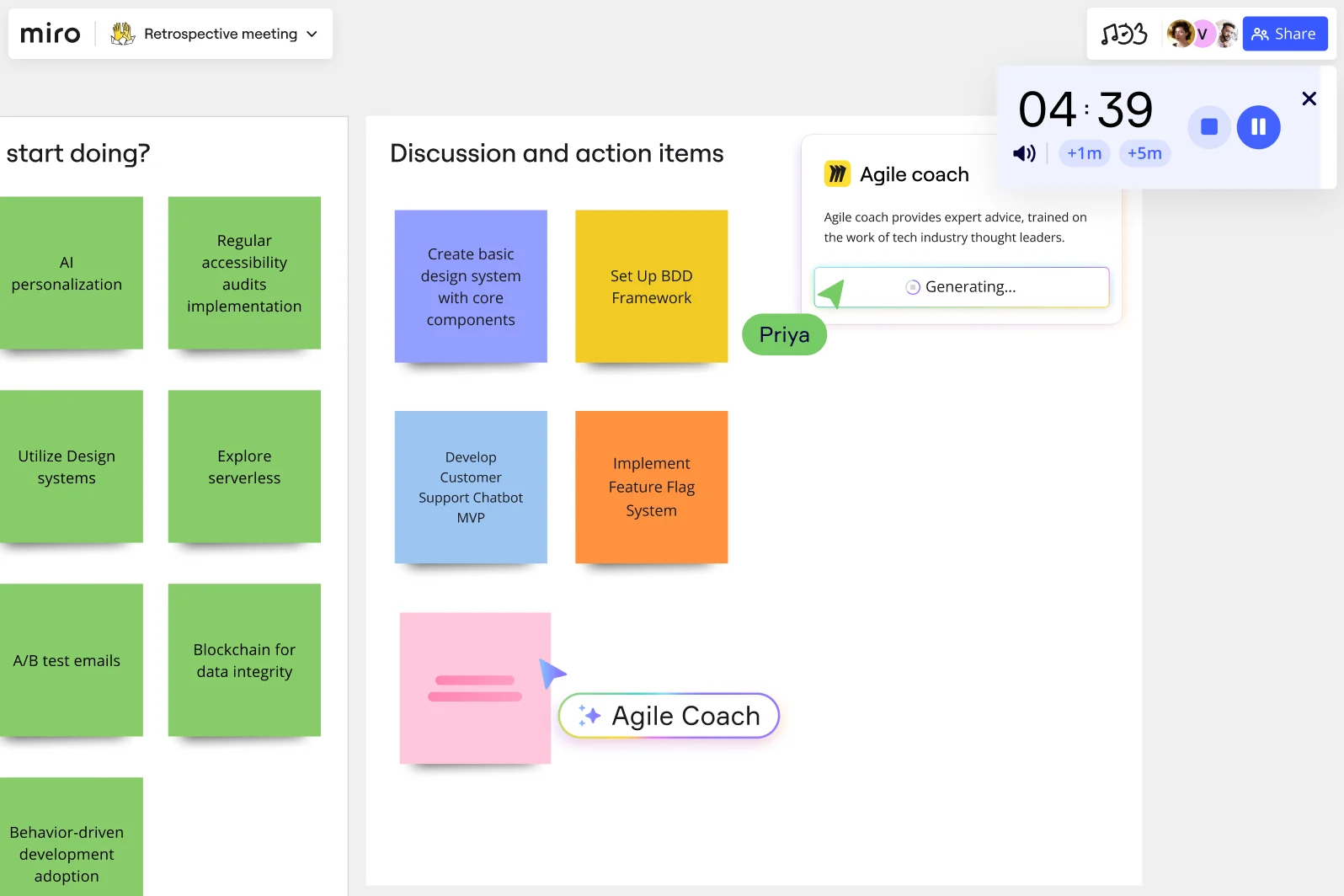
DevOps vs. Agile: Everything you need to know

DevOps and Agile both play a part in software development. They help development teams provide a better product or service to customers, which increases customer value and helps the business grow.
Although these methods have a similar goal, they approach software development differently. They each have their own focus and priorities, and they don’t structure production in the same way.
Before we outline the differences, let’s clarify what Agile and DevOps are.
What is Agile?
Agile is a project management methodology that allows project teams to work in short iterations. It offers flexibility to change the scope of work, encourages collaboration, and enables teams to reprioritize tasks to provide the most customer value.
During iterations, Agile teams work towards a common goal over a specific time frame. When the time frame is up, they can re-prioritize tasks, assign new goals, and start a new iteration.
The Agile methodology features a selection of frameworks (it’s not a single process). Here are some common examples of Agile frameworks:
Scrum
The Scrum framework is the process of managing and reviewing sprints. It helps Agile teams align their work to achieve the sprint goal and deliver customer value. At the end of each sprint, the team discusses what went well, what didn’t, and what to prioritize in the next sprint.
Kanban
The Kanban framework provides a visual workflow, allowing project team members to see all tasks in a sprint or project. Using a Kanban board, team members can assign tasks to a column that shows the job status. As the tasks progress, they move through the columns.

Dynamic system development method (DSDM)
DSDM is an incremental approach to software delivery. The framework provides increased planning and focus on ensuring that all the work in the project aligns with the organization’s strategic goals.
What is DevOps?
DevOps (short for development operations) is an approach to automate and integrate software development and deployment.
The goal of DevOps is to improve collaboration between development and operations teams. It uses Agile practices to encourage continuous feedback between the two teams, improving the quality and speed of software development and delivery.
In other words, it removes the typical communication barriers between development and operations. As a result, these teams can build, test, and release software faster. Explore our DevOps Roadmap Template to learn more about the process.
Key differences between Agile and DevOps
Let’s look at some of the differences between the Agile and DevOps processes.
Type of work
The Agile methodology focuses on collaboration between developers and the client but doesn’t cover operations. In DevOps, operations are an integral part of the process.
Process length
In software development, Agile covers the stages from ideation to code completion. DevOps also covers delivery and maintenance.
Iterations
Agile focuses on iterative development in small batches. In DevOps, the team focuses more on test-and-delivery automation.
Focus
While Agile software development focuses on functions to be delivered to the client, DevOps focuses on performance, security, and availability and how application deployment affects these.
Delivery schedule
Agile teams deliver outputs at the end of every iteration, which could last anywhere from one to four weeks. For a DevOps team, deliverables can be planned, such as major releases or infrastructure upgrades, or require immediate response, such as system failures
How do Agile and DevOps interrelate?
A common misconception about Agile and DevOps is that they’re mutually exclusive. The truth is, they aren’t – they complete one another.
Let’s outline how Agile and DevOps can work together to boost efficiency and improve productivity.
To incorporate operations into Agile workflows
Although from different perspectives, the goals of Agile and DevOps converge right here: to improve the quality and speed of delivering capable software to users.
DevOps is like the missing piece of the Agile puzzle. In fact, it’s common for DevOps to be considered an evolution to the Agile methodology. It uses the same principles but takes operations into account (which Agile doesn’t).
By combining the two processes, teams can produce a well-rounded and informed plan of action for their future sprint or iteration or deployment.
To increase productivity
Agile focuses on iterative development and small batches, while DevOps focuses more on test and delivery automation. Combining these two elements helps you increase efficiency and productivity across your entire workflow.
Take software development as an example. With an Agile approach, you can continually update and reprioritize tasks that deliver the most customer value. By combining this process with DevOps, you can also improve your internal process and automation to streamline the delivery of that new software.
As a result, you boost your productivity, and customers get faster access to new software features. It’s a win-win.
To improve collaboration
Both Agile and DevOps help teams streamline communication.
Agile focuses on collaboration between developers and the client. The process includes regular communication during daily Scrum meetings and sprint retrospectives, ensuring all team members are working towards a common goal.
DevOps improves collaboration between the development and operations teams. It prevents communication silos and encourages the two groups to work together.
Integrating the two processes makes the entire software development and delivery process not just more collaborative but faster and smoother. Team members from all project areas can work together, and there’s complete transparency throughout every iteration.
Using an online platform like Miro to manage the project makes it even easier for teams to collaborate. You can add comments, share updates, and access the virtual workspace from anywhere.

Tips for Agile and DevOps transformation
An Agile and DevOps transformation involves merging the two methods into one process for your development team. It combines the best Agile and DevOps methodologies to create a seamless approach.
Here are some best practices to follow when performing an Agile and DevOps transformation. To provide some context, we’ll use software development as an example.
1. Be sure it’s right for your team
Before launching an Agile and DevOps transformation, be sure it’s the right choice for your software development team. Combining these two methods requires more work, time, and resources, so you need to know that you’re making the right choice.
To help you figure this out, answer the following questions:
What is the goal of your project?
An Agile workflow might be enough if you want to deliver customer value as quickly as possible. But if you want to streamline your processes and focus on the entire software lifecycle (including deployment), aligning Agile with DevOps is the right choice.
Do you have the capacity and resources?
Performing an Agile and DevOps transformation means using more resources, at least temporarily. For example, on top of an existing Agile process, you’ll also have to incorporate critical elements of the DevOps process, such as automation. This additional step may require new software and specialized team members to create and manage the automation. So before you launch this new process, you must ensure you have the resources and capacity to do it properly.
Do you have experience using Agile with DevOps?
If the answer is no, review how to use these processes together (you can use this article as a starting point). That way, you’ll ensure everything runs as smoothly as possible.
2. Integrate DevOps with Agile sprints
It’s a good idea to consider how to incorporate DevOps into your Agile sprints. Start by identifying the DevOps processes you want to integrate and determining the best way to align them with your Agile methodology.
For example, in software development, the DevOps approach includes regular software testing. These tests ensure that the software is performing well and identify areas of improvement.
To integrate this DevOps process, you can incorporate it into your Agile sprints. That way, you’re aligning the key elements of the DevOps process with your Agile framework.
Here are some other best practices for successfully integrating DevOps with your Agile sprints:
Consider DevOps in the sprint planning stage
Discuss DevOps processes in the initial stages of sprint planning. This will ensure that you consider DevOps processes before any sprints go live.
Talk about technical features
In line with DevOps processes, discuss product functionality and operability features. Asking for operations input will also help you anticipate, understand and prioritize technical tasks.
Include the DevOps team
Invite relevant DevOps team members to Agile meetings, such as backlog planning, daily meetings, and sprint reviews. This measure will align all the teams and encourage collaboration (especially if you run an icebreaker beforehand).
3. Use DevOps documentation
DevOps documentation involves recording best practices, standardizing processes, and setting benchmarks for code quality. It helps the development team track their workflow and provides a central location to access the most up-to-date procedures.
This documentation can also be a valuable tool in the Agile process, allowing teams to record their best practices throughout the process until the software release.
Here’s how you can use DevOps documentation in Agile software development:
Create test plans
DevOps test plans define the testing strategy and process for software applications. It includes the type of tests performed, the tools used, and the roles and responsibilities of team members involved in the process. As part of your software development project, you can incorporate test plans to make sure developers know how to test the software throughout the Agile workflow.
Use runbooks
Runbooks provide instructions on how to run and maintain the software application. In software development, a runbook can help developers and operations understand how to troubleshoot issues, perform backups, and recover from unexpected challenges.
Document your Agile process
Although DevOps documentation usually refers to technical processes, you can use the same concept to document your Agile process. For example, you can plot the step-by-step process you’ll follow for your software development project and how it’ll move through the stages of your Agile workflow. That way, everyone on the project team knows what the process is and how they fit into the bigger picture.
Take a look at some of our free documentation templates to start recording your processes.
4. Perform quality checks across the board
After combining your Agile and DevOps processes and your project goes live, review quality across all areas of Agile and DevOps. This step will ensure that the processes are working well together and identify any areas of improvement.
Here are a couple of ways you can measure and track the quality of your work across your entire Agile workflow:
Set goals beforehand
Create measurable goals and objectives before your project starts. Then, you can use these goals to track progress and identify areas of improvement. Use our SMART Goals Templates to help you create specific and realistic goals.
Review success in the sprint retrospective
At the end of each sprint, you’ll perform a sprint retrospective. During this meeting with both developers and operations, you’ll have the chance to review what went well in the sprint, what could have gone better, and what you can improve on going forward. This routine is a chance to make sure your quality of work is up to scratch and that the software is performing as it should.

Manage Agile-DevOps transformation with Miro
Agile and DevOps are two successful methods for managing projects (mostly software development). When integrated successfully, the two methods complement each other.
Miro can help you launch an Agile-DevOps transformation in your business. You can share templates with your team, collaborate on projects, and customize your workspace to suit your needs. You can also use our Agile Board Template or the DevOps Roadmap Template to create and share your projects.